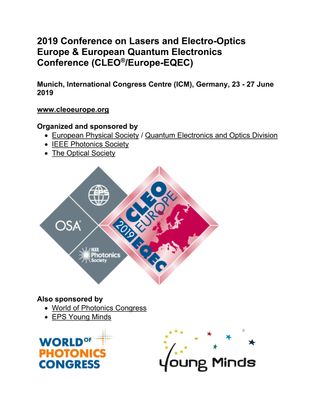?
Ultra-fast single troponine-T molecule sensing
Ch. 8872744. P. 1–1.
Язык:
английский
Ключевые слова: spaser
Berman O., Kezerashvili R., Лозовик Ю. Е., Physical Review B: Condensed Matter and Materials Physics 2013 Vol. 88 No. 23 P. 235424
A novel type of spaser with the net amplification of surface plasmons (SPs) in a doped graphene nanoribbon is proposed. The plasmons in the THz region can be generated in a doped graphene nanoribbon due to nonradiative excitation by emitters like two level quantum dots located along a graphene nanoribbon. The minimal population inversion per ...
Добавлено: 13 января 2014 г.
Andrianov E. S., Zyablovsky A. A., Dorofeenko A. V. и др., Physical Review B: Condensed Matter and Materials Physics 2018 Vol. 98 No. 07-5411 P. 075411-1–075411-8
Добавлено: 22 октября 2018 г.
Нечепуренко И. А., Дорофеенко А. В., Ю.Е. Лозовик, Журнал радиоэлектроники 2015 № 12 С. 1–17
В данной работе рассмотрен поверхностный плазмон-поляритонный лазер (спазер), который генерирует поверхностные плазмоны в графеновой чешуйке. Произведен пересмотр основных лазерных уравнений для описания спазера с учетом дисперсии материальных параметров. Выполнен последовательный вывод уравнений динамики спазера, начиная с уравнений Максвелла-Блоха. Получены уравнения динамики спазера в одномодовом приближении и скоростные уравнения. Найдены выражения для параметров уравнений через физические ...
Добавлено: 18 октября 2016 г.
Yu.E. Lozovik, Nechepurenko I. A., Dorofeenko A. V. и др., Laser Physics Letters 2014 Vol. 11 P. 125701
Добавлено: 17 октября 2016 г.
Parfenyev Vladimir M., Vergeles Sergey S., Optics Express 2014 Vol. 22 No. 11 P. 13671–13679
Добавлено: 31 октября 2017 г.
Wang J., Gao Z., Мелентьев П. Н., Journal of Physical Chemistry C 2020 Vol. 124 No. 30 P. 16553–16560
Наночастицы реализующие плазмонный нанолазер (SPASER), обладающий излучением со сверхузкой спектральной шириной линии, имеющие при этом малый размер и хорошую биосовместимость открывают новые перспективы в качестве потенциальных биологических зондов. К сожалению, за 10 лет, прошедших с момента первой демонстрации SPASER, не было проведено измерений, позволяющих прояснить, как конкретные компоненты конструкции SPASER наночастиц определяют их оптические характеристики. В настоящей работе теоретически ...
Добавлено: 16 января 2021 г.
Лозовик Ю. Е., Nechepurenko I. A., Andrianov E. S. и др., Physical Review B: Condensed Matter and Materials Physics 2016 Vol. 94 No. July P. 035406
The development of active and passive plasmonic devices is challenging due to the high level of dissipation in normal metals. One possible solution to this problem is using alternative materials. Graphene is a good candidate for plasmonics in the near-infrared region. In this paper, we develop a quantum theory of a graphene plasmon generator. We account for quantum correlations ...
Добавлено: 14 сентября 2016 г.
Yu.E. Lozovik, Nechepurenko I. A., Dorofeenko A. V., Photonics and Nanostructures - Fundamentals and Applications 2016 Vol. 21 P. 60–66
Добавлено: 18 октября 2016 г.
Parfenyev V.M., Vergeles S.S., Physical Review A: Atomic, Molecular, and Optical physics 2012 Vol. 86 No. 4 P. 043824
Добавлено: 31 октября 2017 г.
Добавлено: 27 ноября 2019 г.
P. Melentiev, A. Kalmykov, A. Gritchenko и др., , in : 2019 Conference on Lasers and Electro-Optics Europe & European Quantum Electronics Conference (CLEO/Europe-EQEC). : IEEE, 2019. Ch. 8872758.
Добавлено: 4 декабря 2019 г.
Лозовик Ю. Е., Nechepurenko I., Dorofeenko A. и др., Physics Letters A 2014 Vol. 378 No. 9 P. 723–727
Добавлено: 13 января 2014 г.
